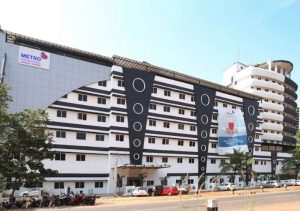Augmentation Cystoplasty
Bladder augmentation is a surgical alteration of the urinary bladder. It involves removing strips of tissue from the intestinal tract and adding this to the tissue of the bladder. … Read More
Top Doctors For Augmentation Cystoplasty Treatments
Top Hospitals For Augmentation Cystoplasty Treatments
Augmentation Cystoplasty
REASONS FOR THE PROCEDURE
This procedure is done in people who:- Lack of adequate bladder capacity
- Detrusor in compliance. (The detrusor muscle is a smooth muscle found in the wall of the bladder. It relaxes to allow the bladder to store urine and contract to release urine.)
- Incontinence is the inability to hold urine.
- When there is a lack of spasticity in the bladder.
- Shrinking of the bladder caused by radiations or injury on the spinal cord.
- Increase the amount of urine that the bladder can hold
- Lower the rate of pressure at which the bladder stores urine and reduce the risk of kidney damage.
WHO IS A CANDIDATE FOR AUGMENTATION CYSTOPLASTY?
Any patient with a marked reduction in bladder capacity or compliance may be a candidate for augmentation cystoplasty. Some of the conditions that can act as indications for augmentation cystoplasty include:- Urine Incontinence; the patient is unable to hold urine and so sometimes wets himself or herself.
- Stiffness of the bladder, which can be due to several reasons including cystitis (inflammation of the bladder).
- Shrinking of the bladder due to treatments (like radiation therapy) or diseases (like spinal cord injury or a congenital spinal defect).
- Failure of the bladder to work properly. This can sometimes lead to an increase in pressure in the bladder and lead to reflux of urine back towards the kidneys. This can lead to kidney infections and damage to the kidneys.
STEPS & PROCEDURES OF AUGMENTATION CYSTOPLASTY
Before the Surgery, You will have a series of tests and examinations including:- A physical examination.
- Examination of the bladder could be radiological imaging or cystoscopy.
- A test of urinary continence and how full the bladder is before it starts to leak or transmit pressure to the kidneys.
- Urine test to ascertain the presence of infections
- Blood test.
RECOVERY RATE
Recovery time varies with individuals and also how severe the condition was before the surgery. Although, it could take two to four weeks of healing before activities of your normal life may begin. It may take 6weeks before sexual activity may begin.SUCCESS RATE
The success rate of augmentation cystoplasty is high as 75% of cases have been recorded to have recovered, 20% improved, with only about 5% having major complications, and 16% of cases needing a revision surgery over the next 3-5 years.LifeStyle That Aids Recovery
There certain lifestyles that could help the recovery and healing process. They include:- Frequent drinking of water to help to flush mucous from the bladder
- Avoiding strenuous activity including strenuous sports and exercises especially the first 6 weeks after surgery
- Keeping regular visit to the hospital
- Avoid smoking and reduce the intake of alcohol
COMPLICATIONS OF AUGMENTATION CYSTOPLASTY
Although death is rare it is also possible. There are also other complications which include:- Heart attack and heart failure
- Stroke
- Pulmonary embolism due to blood clotting at the deep vein of the leg.
- Damage to the ureters, bowel, blood vessels, and blood-nerve.
- Bleeding might require a blood transfusion.
- Infections and injury in the abdomen.
- Bowel obstruction.
- The leak of urine from the bladder requiring a catheter for a very long time.
- Failure for the bladder to be adequately expanded.
- Development of stress and anxiety.
- Vitamin B12 deficiency due to the removal of the ileum.
- Infections in the kidney.
- Bladder rapture.
- Sometimes, stones may be formed and cancer may also result. Though these cases are rare.
Causes
• Detrusor instability.
• Chronic cystitis, including tuberculosis and schistosomiasis.
• Interstitial cystitis.
• Radiation cystitis.
• Classic or cloacal exstrophy.
• Defunctionalized bladder in a patient who is on dialysis.
FAQ
- What does cystoplasty mean?
Cystoplasty is a term used to describe the act of opening the bladder or making an incision of the bladder as a treatment for such diseases and urinary infections and disorders.
- How long do you have to wear a catheter after surgery?
The catheter most times have to stay until the blood in your urine has cleared out then. these usually take 1 to 3 days.
- How does it feel urinating with a catheter?
At first, you may feel slightly uncomfortable as you will have to adjust to the burning feeling around your urethra. Sometimes the pain could come suddenly and with urgency to pee but with time you will adjust to it.
- How much water should I drink with a catheter?
You will need to drink a lot of water when you are with a catheter. This will help flush the bladder of mucus and keep the urine flowing. Drinking about 2-3 liters of water daily will help minimize blockage risk and urinary tract infection.
- Is an augmentation cystoplasty painful?
Augmentation cystoplasty otherwise called bladder augmentation, which aims at improving the stretching ability of the bladder in other to hold more urine. You will need pain medications at least for a week or two to reduce and control the pain you may feel in your abdomen.








































































































